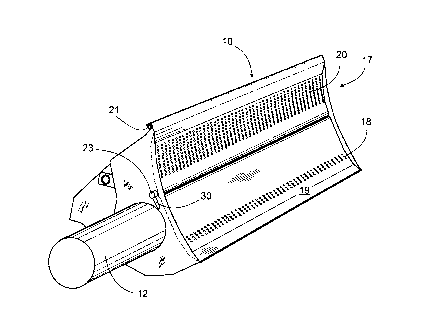Some of the information on this Web page has been provided by external sources. The Government of Canada is not responsible for the accuracy, reliability or currency of the information supplied by external sources. Users wishing to rely upon this information should consult directly with the source of the information. Content provided by external sources is not subject to official languages, privacy and accessibility requirements.
Any discrepancies in the text and image of the Claims and Abstract are due to differing posting times. Text of the Claims and Abstract are posted:
| (12) Patent Application: | (11) CA 2317277 |
|---|---|
| (54) English Title: | STEAM BOX |
| (54) French Title: | PRECHAUFFEUR |
| Status: | Deemed Abandoned and Beyond the Period of Reinstatement - Pending Response to Notice of Disregarded Communication |
| (51) International Patent Classification (IPC): |
|
|---|---|
| (72) Inventors : |
|
| (73) Owners : |
|
| (71) Applicants : |
|
| (74) Agent: | GOWLING WLG (CANADA) LLP |
| (74) Associate agent: | |
| (45) Issued: | |
| (22) Filed Date: | 2000-08-30 |
| (41) Open to Public Inspection: | 2001-03-06 |
| Availability of licence: | N/A |
| Dedicated to the Public: | N/A |
| (25) Language of filing: | English |
| Patent Cooperation Treaty (PCT): | No |
|---|
| (30) Application Priority Data: | ||||||
|---|---|---|---|---|---|---|
|
The invention relates to a steam box (10), which includes a
elongated steam-distribution chamber (11), regulator chambers
(15) set in a row next to this and covered on one side with a
continuous perforated screen (20), and operating devices (13) to
distribute the steam from the distribution chamber to each
regulator chamber (15). The steam box (10) is intended to feed
steam through the perforated screen (20) to the web, to heat it
according to the desired profile. The aforesaid perforated screen
(20) is secured along one long edge to hinge members (21) and
along the opposite .edge to locking members (22) and is arranged
to be able to be opened, to permit access to the regulator
chambers (15).
Note: Claims are shown in the official language in which they were submitted.
Note: Descriptions are shown in the official language in which they were submitted.

2024-08-01:As part of the Next Generation Patents (NGP) transition, the Canadian Patents Database (CPD) now contains a more detailed Event History, which replicates the Event Log of our new back-office solution.
Please note that "Inactive:" events refers to events no longer in use in our new back-office solution.
For a clearer understanding of the status of the application/patent presented on this page, the site Disclaimer , as well as the definitions for Patent , Event History , Maintenance Fee and Payment History should be consulted.
| Description | Date |
|---|---|
| Inactive: IPC from MCD | 2006-03-12 |
| Application Not Reinstated by Deadline | 2004-08-30 |
| Time Limit for Reversal Expired | 2004-08-30 |
| Deemed Abandoned - Failure to Respond to Maintenance Fee Notice | 2003-09-02 |
| Letter Sent | 2001-11-27 |
| Inactive: Single transfer | 2001-10-23 |
| Application Published (Open to Public Inspection) | 2001-03-06 |
| Inactive: Cover page published | 2001-03-05 |
| Inactive: First IPC assigned | 2000-10-12 |
| Letter Sent | 2000-09-21 |
| Inactive: Filing certificate - No RFE (English) | 2000-09-21 |
| Application Received - Regular National | 2000-09-20 |
| Abandonment Date | Reason | Reinstatement Date |
|---|---|---|
| 2003-09-02 |
The last payment was received on 2002-07-15
Note : If the full payment has not been received on or before the date indicated, a further fee may be required which may be one of the following
Patent fees are adjusted on the 1st of January every year. The amounts above are the current amounts if received by December 31 of the current year.
Please refer to the CIPO
Patent Fees
web page to see all current fee amounts.
| Fee Type | Anniversary Year | Due Date | Paid Date |
|---|---|---|---|
| Application fee - standard | 2000-08-30 | ||
| Registration of a document | 2000-08-30 | ||
| Registration of a document | 2001-10-23 | ||
| MF (application, 2nd anniv.) - standard | 02 | 2002-08-30 | 2002-07-15 |
Note: Records showing the ownership history in alphabetical order.
| Current Owners on Record |
|---|
| METSO PAPER AUTOMATION OY |
| Past Owners on Record |
|---|
| JUKKA PEKKA ALEN |
| JUKKA SAMPPALA |
| REIJO HASSINEN |
| TAPIO HARKONEN |
| TOMMI LUOSMA |
| TUOMAS NAATANEN |